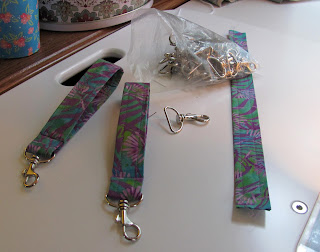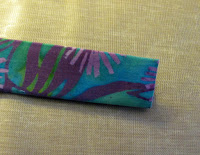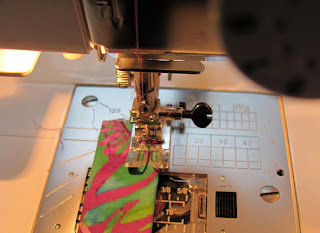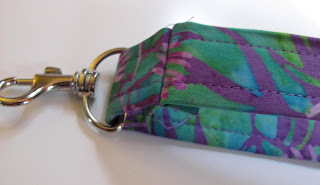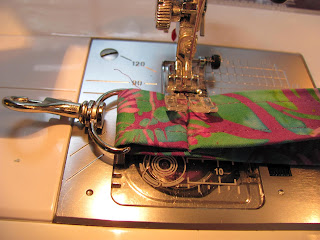For your favorite half-blood
prince, this scarf uses an inspired blend of Griffindor red and gold
with muggle grey to create a double thick and warm scarf for those
spooky winter nights when Diagon Alley is a long bus ride away.
The scarf is 8” wide by
64” long and knitted as a tube. Instructions for single thickness
and longer versions at end of pattern.
Supplies:
Yarn: worsted weight yarn, 2
skeins each of grey, gold, red. The heathery “rag wool” grey in
this scarf is an inexpensive wool/acrylic blend: Lion Brand
Wool-Ease. The color stripes can be any similar worsted weight yarn
that doesn't itch! (more Lion Brand Wool-Ease, Patons Classic Wool,
or Red Heart Soft Yarn). I was looking for something that wouldn't
itch. For longer version, purchase additional skein of each color.
Knitting needles: 16”
circular needles.
Guage: 5 stitches/inch
Pattern: Knit in in the
round in stockingknit stitch throughout. Follow stripe order below.
To start cast on 84 stitches
with grey yarn and join, being careful not to twist the round. Follow
chart below for color order.
|
Grey: knit even for 8 inches.
|
|
Gold: 6 rows
Grey: 5 rows
Repeat alternating gold and grey stripes 6 times
ending with a grey row.
|
|
Red: 6 rows
Grey: 5 rows
Gold: 6 rows
Grey: 5 rows
Red: 6 rows
Grey: 5 rows
Gold: 6 rows
Grey: 5 rows
|
|
Red: 6 rows
Gold: 6 rows
|
|
Red: 8.5 inches
|
|
Grey: 5 rows
Gold: 6 rows
Grey: 5 rows
Red: 6 rows
Grey: 5 rows
Gold: 6 rows
Grey: 5 rows
|
|
Red: 6 rows
Grey: 5 rows
Repeat alternating red and grey stripe 5 times.
|
|
Gold: 6 rows
Grey: 5 rows
Gold: 6 rows
(For longer scarf add 8.5 inches of red here,
followed by 10 stripes of alternating red and grey.)
|
|
Grey: 5 ¼ inches
|
|
Gold: 6 rows
Grey: 5 rows
Gold: 6 rows
|
|
Grey: 5 inches.
(Not long enough? Add 10 (or more!) alternating
stripes of red and greyfollowed by one long section of grey.)
|
Bind off using larger
needles.
To finish, turn inside out
and weave in loose ends. Turn right side out. Sew up ends.
For fringe use double
strands of yarn alternating grey with gold and then red yarns. Insert
crochet hook through end edge of scarf, loop two strands around hook,
pull through and then insert ends through loop.
Variations
Single Thickness Scarf
To make a lighter weight
scarf, cast on 48 stitches and work on straight needles in rib of
knit 1, purl 1 throughout to prevent curling edges. It will give the
project a ribbed look that varies with how tightly you knit. I have
never been happy with the edge treatments that I have found (i.e.
slip last stitch) when using straight stockingknit stitch. If you are
using wool, you can block the final result, acrylic yarns do not
block as well.
Longer Scarf
Purchase additional skein of
each color used. You will need them if doing double thick tube
pattern.
If you know from the get go
that you want it longer add 8.5 inch wide stripe of solid red,
followed by 10 alternating stripes of red and grey where indicated in
the pattern.
If you are uncertain how
long you want the scrarf, knit as written and when you get to the
end, add 10 or more additional alternating stripes of red and grey
ending with a long section (8” plus or minus) of solid grey.
Handy Tip
To avoid a jig jog where the
stripes change colors: remember you are knitting in the round, so
knit one whole row of your new color and when you get to your
starting point again, in that first stitch of the row, pick up the
previous colored stitch below it PLUS that stitch and knit the two
stitches together. Got that? There are several U-tube videos that
explain it very well. Good luck!


